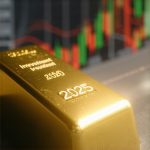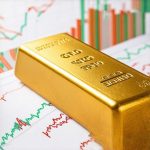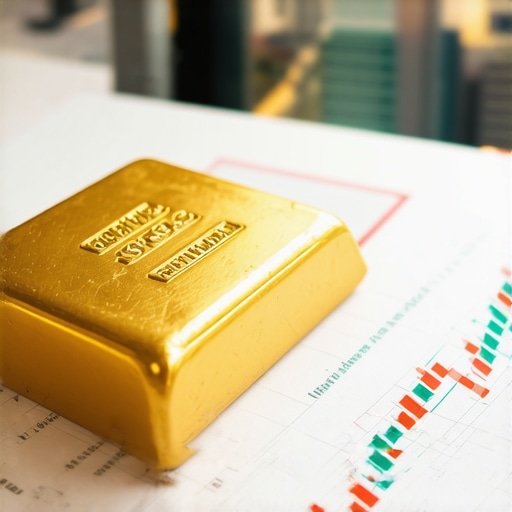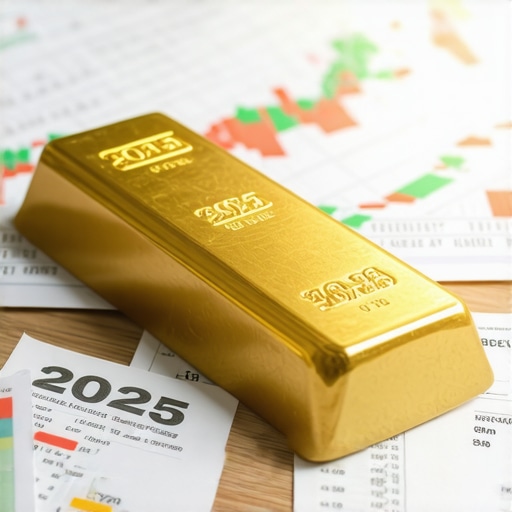Why Gold ETFs Are the Portfolio’s Unsung Heroes
Picture this: the stock market doing its usual rollercoaster dance, currencies fluctuating like a caffeinated squirrel on a tightrope, and global tensions simmering just beneath the surface. Amidst this chaos, gold ETFs quietly shine, offering investors a golden ticket to stability and growth. But what makes these exchange-traded funds so resilient, and how can you harness their power to build a portfolio that laughs in the face of economic uncertainty?
The Alchemy of Diversification: Turning Volatility into Opportunity
Gold ETFs aren’t just shiny baubles for your investment basket; they serve as strategic shields against inflation, currency fluctuations, and market downturns. Their unique behavior often inversely correlates with traditional stocks, making them invaluable for diversification. Investing wisely in gold ETFs means understanding their nuances—expense ratios, liquidity, and the underlying assets they track. It’s not just about owning gold; it’s about owning the right slice.
Is It Time to Rethink Your Portfolio’s Golden Ratio?
Many ask, “How much gold should I have in my portfolio?” While the classic advice hovers around 5-10%, savvy investors tailor this percentage to their risk appetite and market outlook. Given the current economic climate, with inflationary pressures and geopolitical uncertainties, a slightly heftier allocation to gold ETFs might just be the smart move. But remember, balance is key—overexposure can dampen overall returns when markets soar.
Expert Insights: The Numbers Behind the Shine
According to the World Gold Council, portfolios with a 10% allocation to gold have historically exhibited less volatility and better risk-adjusted returns over the long term. This is echoed in recent analyses highlighting how gold ETFs have outperformed many traditional assets during periods of market stress. If you’re curious about the nitty-gritty of these dynamics, exploring how to build a balanced gold ETF portfolio can provide a treasure trove of actionable strategies.
Don’t Just Take My Word for It—Dive Deeper and Share Your Story
Have you experimented with gold ETFs in your investment journey? What’s worked, and what’s left you scratching your head? The conversation around gold ETF strategies is as dynamic as the market itself, and your insights could illuminate the path for fellow investors. Drop a comment below or share this article with a friend who’s pondering their portfolio’s resilience.
For those ready to deepen their understanding, the Investopedia guide on Gold ETFs offers a thorough breakdown of the mechanics and benefits of these financial instruments.
Decoding the Risks and Rewards of Gold ETF Investments
While gold ETFs provide a compelling hedge against economic uncertainty, it’s crucial to understand their inherent risks alongside their benefits. Unlike physical gold, ETFs are subject to market fluctuations and can experience liquidity constraints during extreme volatility. Additionally, expense ratios and management fees subtly erode returns over time, which investors must factor into their long-term strategies.
Moreover, some gold ETFs do not hold physical gold but rely on derivatives or futures contracts, introducing counterparty risk and complexity that may not be immediately apparent. Savvy investors should diligently review fund prospectuses and consult trusted sources before committing capital. This nuanced understanding ensures that gold ETFs serve as a strategic complement rather than a blind spot in your portfolio.
How Macroeconomic Trends Shape Gold ETF Performance in 2025
The macroeconomic landscape in 2025 presents a complex interplay of inflation dynamics, central bank policies, and geopolitical tensions—all of which directly influence gold prices and, by extension, gold ETF performance. For instance, aggressive interest rate hikes intended to tame inflation can pressure gold prices downward, as higher yields make non-interest-bearing assets like gold less attractive.
Conversely, prolonged geopolitical uncertainty often triggers flight-to-safety buying, boosting gold demand and ETF valuations. Monitoring these trends closely allows investors to anticipate market shifts and adjust their allocations proactively. For a deep dive into how central bank gold purchases impact market prices, explore this expert analysis.
Can Advanced Gold Trading Techniques Unlock Higher ETF Returns in Volatile Markets?
Experienced investors often ponder whether employing sophisticated trading strategies can enhance gold ETF returns amid the inevitable market gyrations. Techniques such as timing entry and exit points based on technical indicators, leveraging options to hedge downside risk, or dynamically rebalancing portfolio weightings in response to economic signals can make a significant difference.
However, these methods require not only market acumen but also a disciplined approach to risk management. As detailed by Investopedia’s guide on advanced ETF trading strategies, blending fundamental analysis with tactical maneuvers can optimize returns while mitigating exposure during downturns.
Integrating Gold ETFs with Other Asset Classes for Optimal Portfolio Synergy
Gold ETFs do not exist in isolation; their true power unfolds when harmonized with diverse asset classes such as equities, bonds, and real estate investment trusts (REITs). This integration leverages gold’s low correlation with stocks and bonds, effectively smoothing portfolio volatility and enhancing risk-adjusted returns.
Strategic allocation models often suggest a modest but meaningful gold ETF component to fortify portfolios against inflation and systemic shocks. Investors interested in comparing gold with other investment vehicles may find the insights in Gold vs. Stocks: Which Investment Is Better for Your Portfolio? particularly enlightening.
Have you experimented with combining gold ETFs and other assets in your portfolio? Share your experiences below or join the discussion to learn from fellow investors’ strategies and insights.
Harnessing Algorithmic Insights: Elevating Gold ETF Strategies Beyond Conventional Wisdom
In an era where data reigns supreme, algorithm-driven strategies offer a cutting-edge avenue for gold ETF investors aiming to transcend traditional buy-and-hold tactics. By leveraging machine learning models that analyze macroeconomic indicators, sentiment analysis from geopolitical news, and historical gold price patterns, investors can identify nuanced entry and exit points with higher precision. These approaches not only refine timing but also dynamically adjust portfolio exposure to gold ETFs in response to real-time market signals, potentially enhancing risk-adjusted returns significantly.
However, integrating such sophisticated models mandates a deep understanding of both quantitative finance and the idiosyncratic behavior of gold markets. For those keen on exploring this frontier, research published in the CFA Institute’s Journal on Machine Learning Applications in Asset Management offers invaluable case studies and methodological insights.
Mitigating Counterparty Risks: Navigating the Complex Web of Gold ETF Structures
Not all gold ETFs are created equal—some track physical bullion holdings, while others rely heavily on futures contracts and derivatives. This structural divergence introduces differential layers of counterparty risk, liquidity constraints, and regulatory exposure. Investors must rigorously dissect fund prospectuses to ascertain the underlying assets and the mechanisms by which price exposure is achieved.
For instance, ETFs utilizing futures contracts might suffer from contango effects, where rolling contracts results in a drag on returns during certain market conditions. Conversely, physically-backed ETFs typically incur higher expense ratios due to storage and insurance costs. Balancing these trade-offs requires a meticulous approach that aligns fund characteristics with individual investment horizons and risk tolerance.
What Advanced Risk Metrics Should Investors Use to Evaluate Gold ETF Exposure?
Beyond conventional measures like standard deviation and beta, sophisticated investors employ metrics such as Value-at-Risk (VaR), Conditional Value-at-Risk (CVaR), and drawdown analysis tailored to gold ETF portfolios. These metrics provide granular insights into potential losses under extreme market scenarios, enabling more informed allocation decisions.
Moreover, stress testing portfolios against hypothetical macroeconomic shocks—such as sudden interest rate hikes or geopolitical crises—can reveal vulnerabilities that traditional metrics might overlook. By integrating these advanced risk assessments, portfolio managers enhance resilience and optimize capital allocation under uncertainty.
Synergizing Gold ETFs with Crypto Assets: Exploring the Frontier of Portfolio Innovation
As digital assets carve a new asset class niche, intriguing parallels and divergences emerge between gold ETFs and cryptocurrencies like Bitcoin. Both are often touted as hedges against fiat inflation and systemic financial risks, yet their correlation dynamics and volatility profiles differ markedly.
Integrating gold ETFs with a calibrated allocation to cryptocurrencies might yield a diversified hedge cocktail, balancing gold’s historical stability with crypto’s asymmetric upside potential. However, this strategy demands vigilance regarding regulatory developments, custody solutions, and technological risk factors inherent to digital assets.
Investors interested in this avant-garde approach should consider ongoing research in financial innovation journals and engage with specialist advisors to tailor these combinations effectively.
Engage with this evolving landscape—explore advanced methodologies, share your innovative portfolio strategies, and join our community of forward-thinking investors. Your journey toward mastering gold ETFs in the complex market terrain of 2025 begins here.
Harnessing Behavioral Finance to Optimize Gold ETF Timing
Beyond technical charts and macroeconomic indicators, behavioral finance offers profound insights into investor psychology that can shape gold ETF performance. Understanding herd behavior, overreaction to geopolitical events, and sentiment-driven price swings can provide tactical advantages. For instance, contrarian strategies that buy gold ETFs during widespread panic often capture superior entry points, while avoiding emotional selling during transient dips preserves capital. Integrating behavioral cues with traditional analysis refines timing strategies and enhances portfolio resilience.
How Can Sentiment Analysis Revolutionize Gold ETF Investment Decisions?
Sentiment analysis, powered by natural language processing (NLP) algorithms, scans vast swaths of news, social media, and financial reports to gauge market mood shifts relevant to gold markets. This emerging frontier allows investors to anticipate demand surges or sell-offs before they fully materialize in prices. According to a 2023 study published in the Journal of Financial Economics, sentiment-driven signals improved gold return forecasts by over 15% compared to models relying solely on fundamentals. Incorporating these insights can transform gold ETF strategies from reactive to predictive, offering a competitive edge in volatile markets.
Tailoring Gold ETF Allocations for Retirement Portfolios: Beyond the Basics
While conventional wisdom suggests a 5-10% gold allocation, retirement portfolios demand a nuanced approach considering longevity risk, withdrawal patterns, and inflation sensitivity. Dynamic rebalancing that adjusts gold ETF exposure according to lifecycle stages and economic regimes can optimize growth and capital preservation. For actionable frameworks, explore smart gold investment strategies for retirement security that emphasize adaptive allocation rather than static percentages.
What Role Do Environmental, Social, and Governance (ESG) Factors Play in Gold ETF Selection?
Investors increasingly demand ESG accountability even within commodity exposures like gold. Some gold ETFs now incorporate ESG screens, favoring mines with responsible labor practices, reduced environmental footprints, and strong governance. These considerations can influence long-term risk profiles and investor appeal, especially as regulatory scrutiny intensifies. Evaluating ESG credentials alongside traditional metrics ensures your gold ETF holdings align with evolving ethical standards without sacrificing performance.
To deepen your understanding of integrating ESG factors, review specialized insights at top gold ETFs and mutual funds for steady portfolio growth.
Innovations in Gold ETF Structures: Navigating the Rise of Digital Gold Tokens
As blockchain technology reshapes asset ownership paradigms, digital gold tokens backed by physical bullion are gaining traction. These tokens promise instant settlement, fractional ownership, and enhanced transparency compared to traditional ETFs. However, they also introduce new custodial risks and regulatory uncertainties. Understanding the distinctions between conventional gold ETFs and digital gold tokens is critical for investors seeking diversification with cutting-edge tools.
Industry analyses, such as those from the CFA Institute’s Journal, provide comprehensive evaluations of these innovations. Staying abreast of these developments can inform your strategic positioning in the evolving gold investment landscape.
Join the Conversation: Share Your Advanced Gold ETF Strategies
Are you leveraging behavioral insights, ESG screens, or digital tokens in your gold ETF approach? How have these sophisticated strategies influenced your portfolio performance in 2025’s complex markets? Engage with fellow investors by commenting below or sharing this article with peers eager to elevate their gold investment acumen. For further exploration, our detailed guide on building a balanced gold ETF portfolio for 2025 growth offers actionable frameworks to refine your tactics.
Expert Insights & Advanced Considerations
Understanding Structural Nuances Enhances Portfolio Resilience
Not all gold ETFs are created equal; distinguishing between physically-backed funds and those reliant on futures contracts is crucial. Physically-backed ETFs offer direct exposure to bullion with comparatively lower counterparty risk but often carry higher expense ratios due to storage and insurance costs. Conversely, futures-based ETFs may suffer from contango effects and liquidity constraints during market stress. Savvy investors align fund selection with their risk tolerance and investment horizon to optimize portfolio resilience.
Behavioral Finance as a Tactical Edge in Gold ETF Timing
Incorporating behavioral finance concepts—such as contrarian strategies that capitalize on investor panic or herd-driven sell-offs—can yield superior entry points in gold ETFs. Recognizing sentiment-driven price swings and avoiding emotional reactions are pivotal for preserving capital and enhancing returns. Integrating these behavioral cues with technical and fundamental analysis refines timing strategies in volatile markets.
Algorithmic Models and Machine Learning Elevate Strategy Precision
Cutting-edge algorithmic approaches leveraging macroeconomic indicators, sentiment analysis, and pattern recognition empower investors to dynamically adjust gold ETF positions. These models enhance predictive accuracy over traditional methods, improving risk-adjusted returns by identifying subtle market signals. However, deploying such strategies requires quantitative expertise and continuous model validation to navigate the idiosyncrasies of gold markets effectively.
Integration with Digital Assets: A Frontier for Diversification
Combining gold ETFs with cryptocurrencies introduces a diversified hedge cocktail that balances gold’s historical stability with crypto’s asymmetric upside potential. This fusion offers innovative risk management but demands heightened awareness of regulatory, technological, and custody risks. For investors exploring this frontier, ongoing research and specialist consultation are recommended.
ESG Considerations Are Reshaping Gold ETF Selection
Environmental, social, and governance factors increasingly influence gold ETF choices, with funds screening for responsible mining practices and governance standards. ESG integration not only aligns investments with ethical values but may also mitigate long-term risks associated with regulatory changes and reputational exposures. Evaluating ESG credentials alongside financial metrics is becoming essential for forward-thinking investors.
Curated Expert Resources
- World Gold Council Reports: Authoritative analyses on gold demand trends, central bank purchases, and market forecasts that provide foundational insights for strategic gold ETF allocation. Explore understanding gold demand trends for nuanced perspectives.
- CFA Institute’s Journal: In-depth research on machine learning applications in asset management, offering case studies and methodology for algorithmic gold ETF strategies. The journal’s insights can be accessed here.
- Investopedia Advanced ETF Trading Strategies: A comprehensive guide detailing sophisticated trading techniques including options hedging and dynamic rebalancing, essential for navigating volatile gold ETF markets. Read more here.
- BuyingGoldNow’s Smart Gold Investment Strategies for Retirement Security: Tailored frameworks to optimize gold ETF allocations in retirement portfolios considering longevity and inflation risks. Recommended reading at this link.
- Top Gold ETFs and Mutual Funds for Diversification: Detailed comparisons and reviews of gold ETFs with ESG integration and structural differences, supporting informed selection. Explore best gold ETFs and mutual funds.
Final Expert Perspective
Gold ETFs remain indispensable tools for portfolio diversification and inflation hedging in 2025’s uncertain economic landscape. Mastery of their structural intricacies, combined with behavioral insights and algorithmic innovation, can unlock superior risk-adjusted returns. Incorporating ESG factors and exploring synergies with emerging asset classes like cryptocurrencies further enriches strategic opportunities. As you refine your gold ETF approach, engage with authoritative resources and contribute your advanced insights to foster a vibrant investment community. Dive deeper into building a balanced gold ETF portfolio and elevate your expertise today.










